Do you ever have the feeling you’re being left behind in gardening? You think your tomatoes are doing well when you spot Bob’s on social media are three feet taller than yours, laden with ripening fruit! You’re still waiting for the first flower truss. Fear not! Gardening is not a competition – there are veg growing competitions for that – and at this time of year everything grows so mind-blowingly fast, plants catch up quicker than you can say “holy courgettes”.
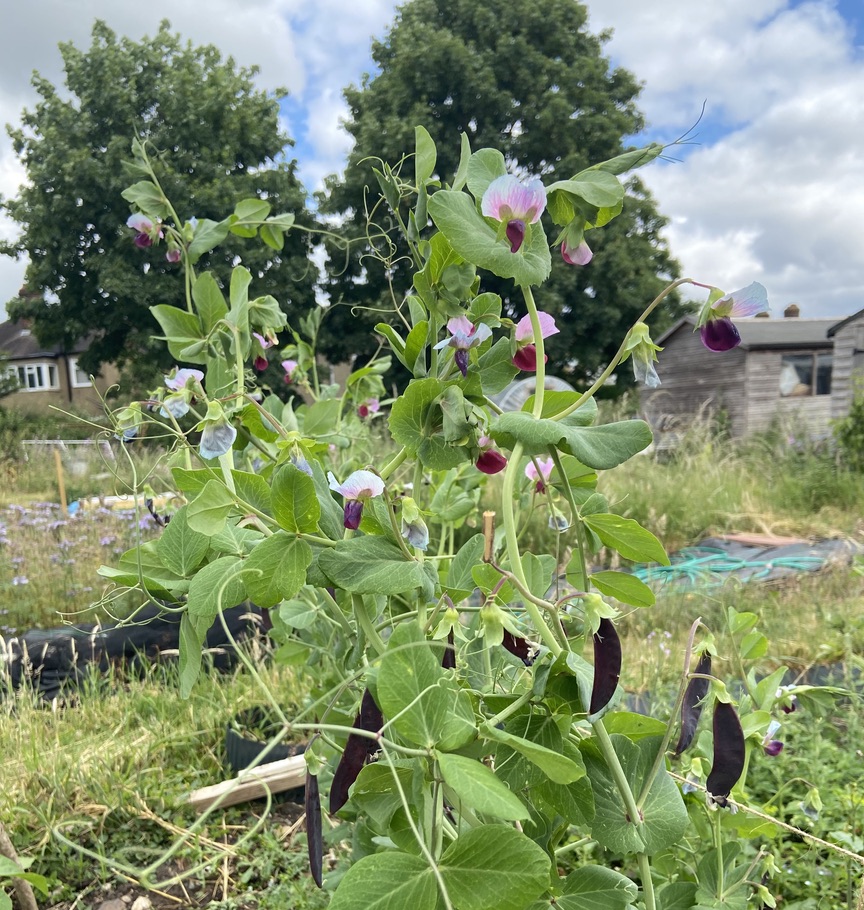
Last year I wrote a feature for Telegraph Gardening on Garden Organic’s heritage seed library. Sensing my excitement over the phone, they kindly posted me a packet of the pea ‘Blackdown Blue’ to try growing. This pea has a lovely romantic story of a soldier returning from the Battle of the Somme in the First World War who was given some of its seeds on his return home. There he and his family grew the seeds for decades while the cultivar was lost from cultivation, only recently rediscovered. And here it is on my allotment, I’ve never grown such a vigorous pea and the colour of the flowers and seed pods, I love it.
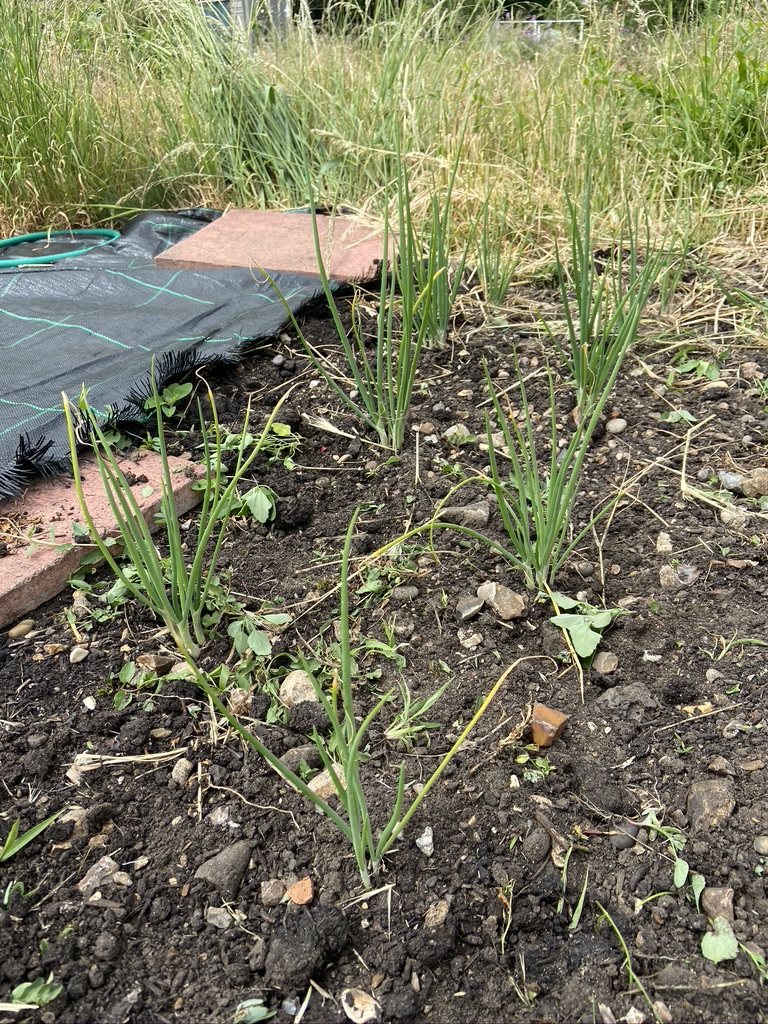
This year I am growing onions from seed for the first time (red and white). They seem particularly slow to get going, although the white onions are now thickening up. I find this more satisfying personally than growing from sets, despite the longer growing time.
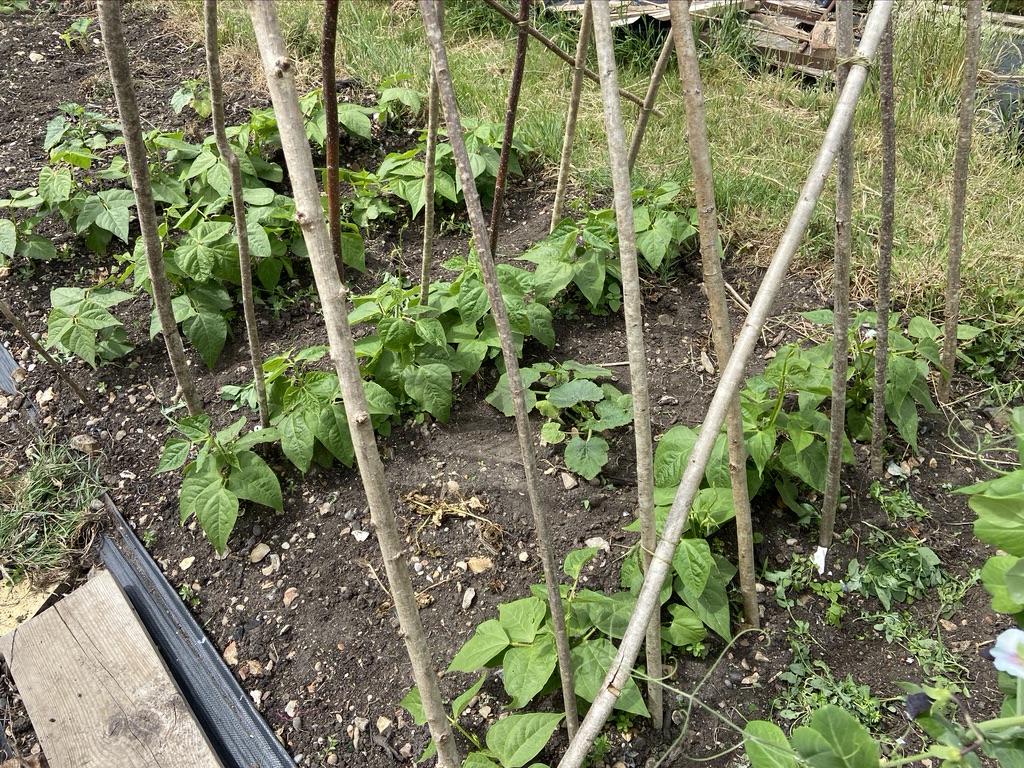
Alongside the vigorous peas, I’m particularly pleased with the progress of my beans. Earlier in the year I had a good crop of broad beans, now the French bean ‘Cobra’, sown in two rows with supports, are growing very strongly ready to begin climbing. While dwarf ‘Berlotti’ beans, which I intend to dry for use over winter, are growing just as well. I’ve spaced them approximately 60cm between rows for plenty of space and easy weeding. As the french beans will finish toward the end of summer, I’ve planted pumpkin ‘Snowman’ beneath them. It will grow around the floor beneath, cropping later in Autumn.
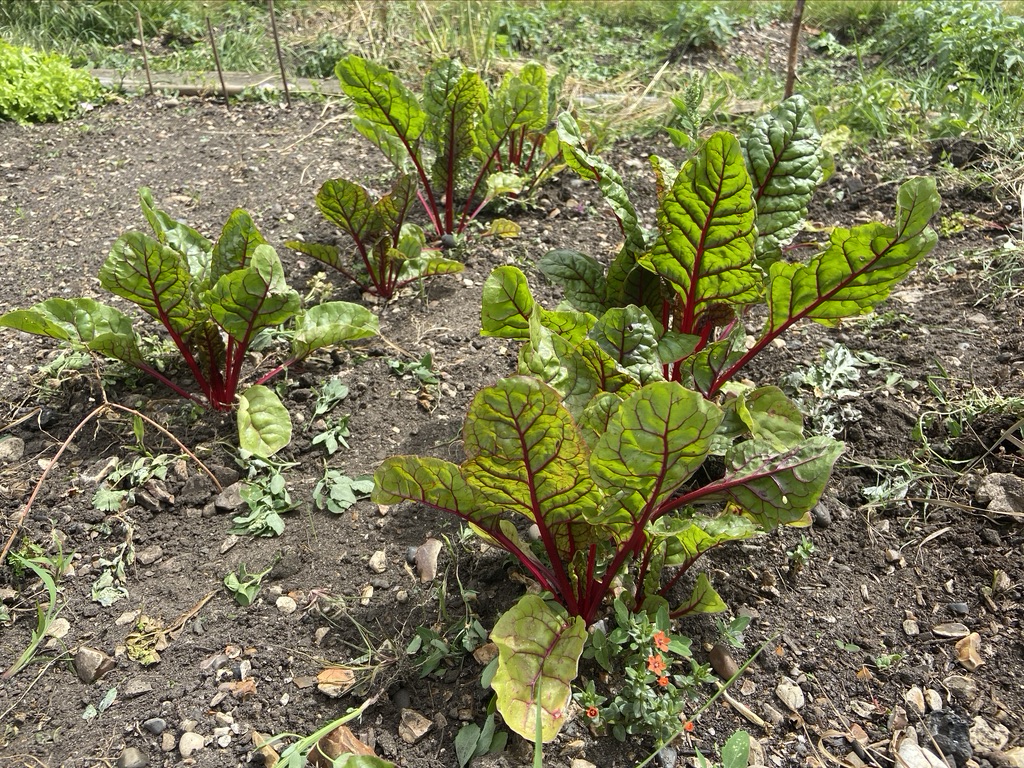
I always grow chard because it’s one of those easy crops requiring no real care at all except to thin out crowded seedlings and to weed them. Chard must be cooked and I like to use it as a fried green as a side dish, you cook the stems too, a little longer than the leaves, chopping everything up. It’s very nice in a little butter.
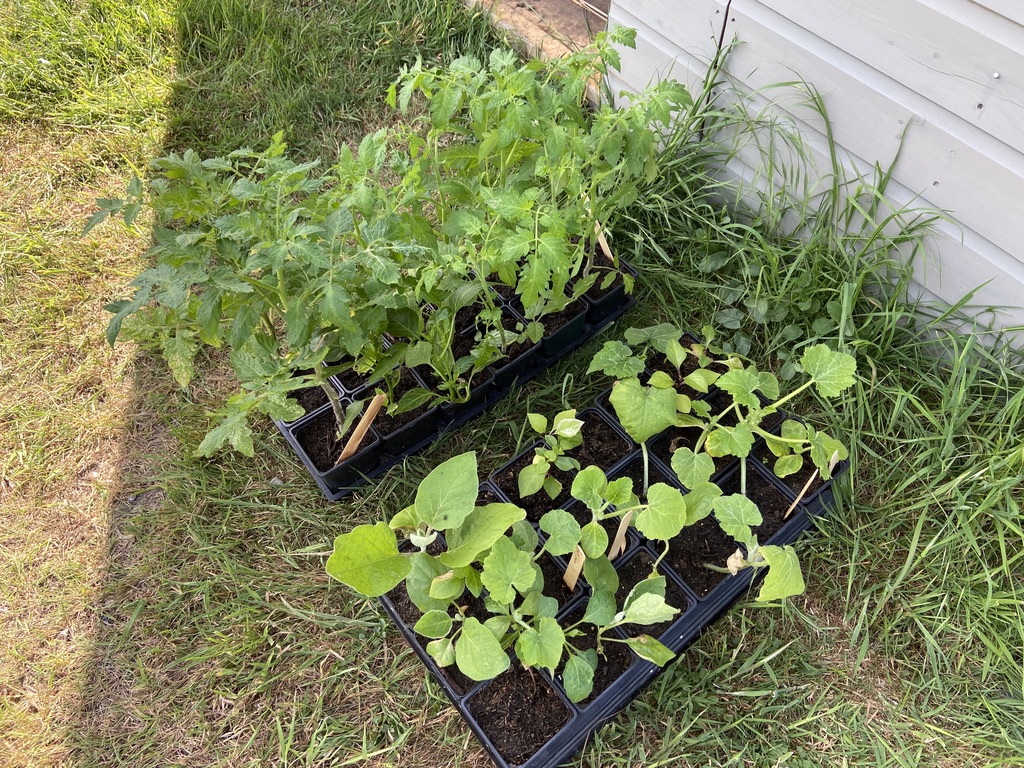
I grow most of my seedlings at home to be taken down to the plot to be planted out. Tomatoes and cucurbits went out a couple of weeks ago and are already rocketing away with the recent rain – I had to water them regularly at first due to it being so dry.
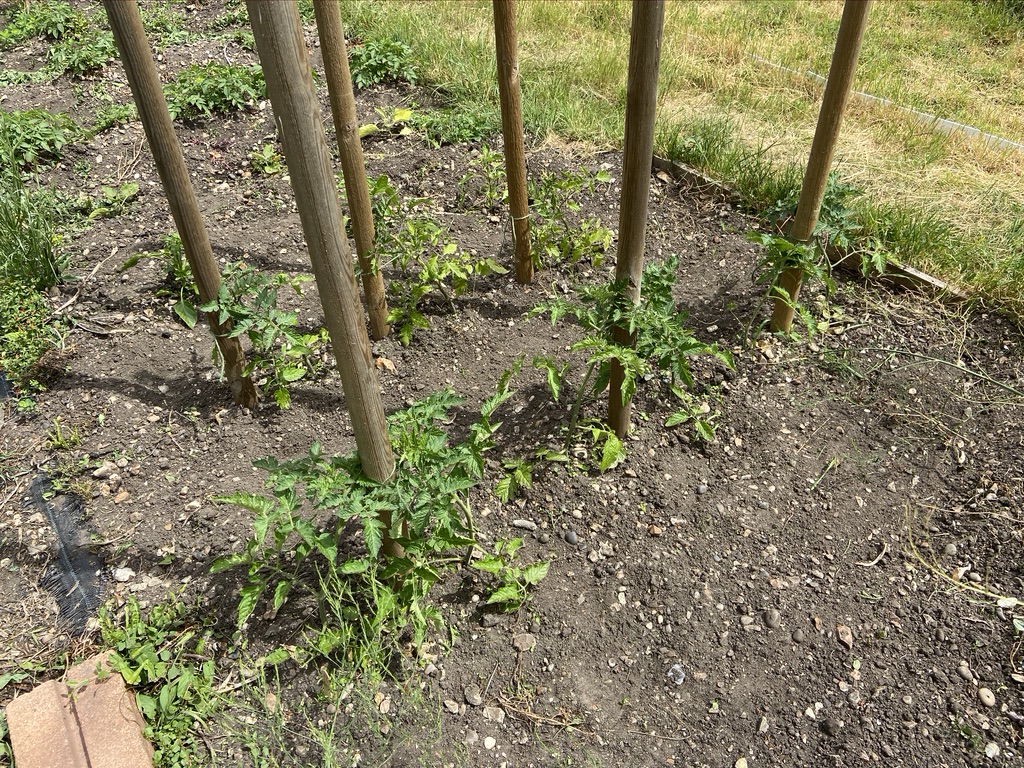
My plants are slightly behind many people’s veggies on social media but it doesn’t really matter as they’ll produce just as many crops, if not more as they’re going outside during perfect weather. The tomato plants look very small for instance but once in the ground, they grow so incredibly quickly and I’ll have my first tomatoes soon, continuing until autumn.
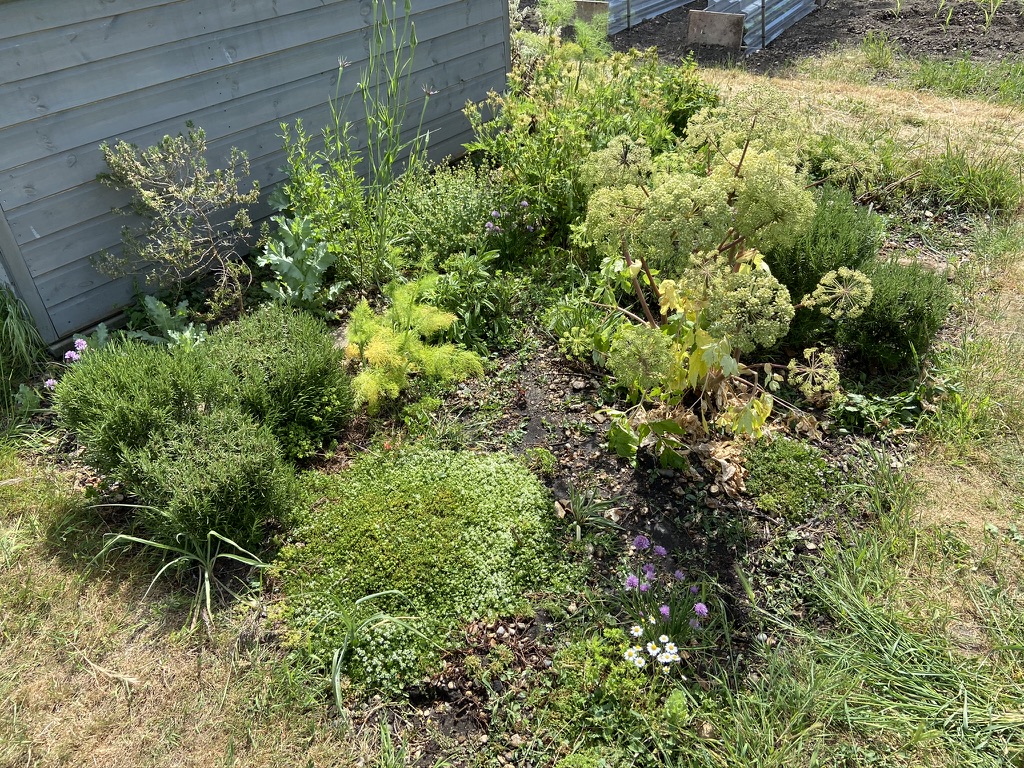
I know my herb bed still looks a little scrappy due to the grass edges creeping in but I’m very pleased now all plants are established. Chris and I could be completely self sufficient from this bed if we were closer to pick daily. For herbs, the bigger the better.
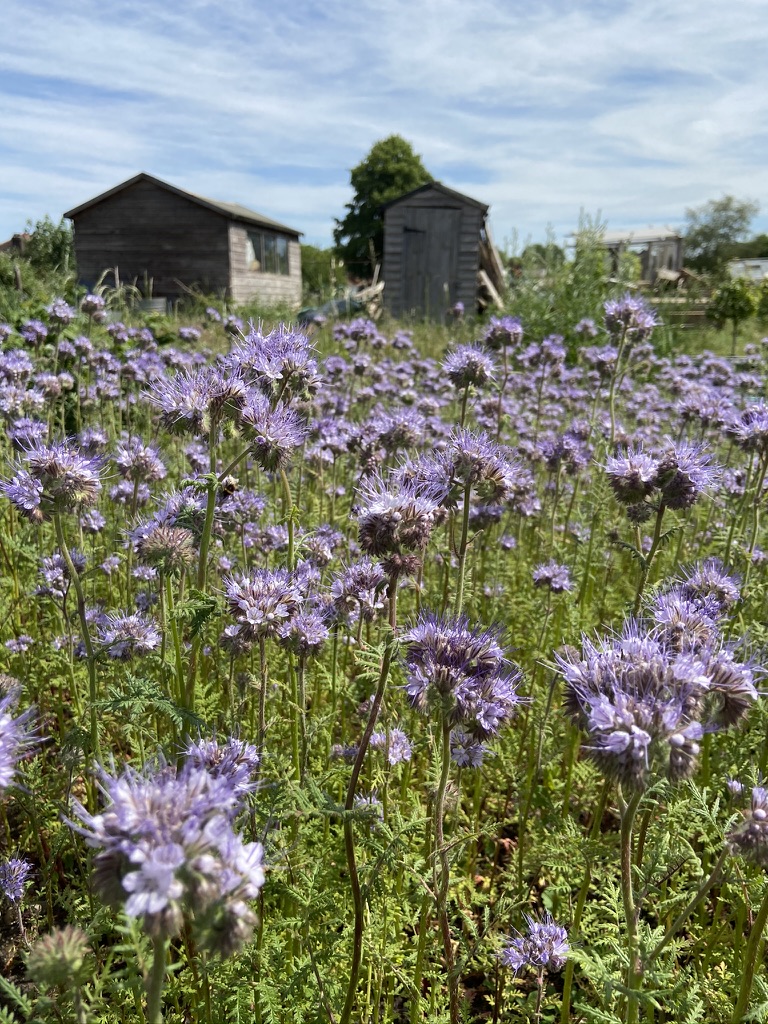
In another Telegraph feature I wrote, Gareth Morgan of the Soil Association was so enthusiastic about Phacelia tanacetifolia as a cover crop / green manure I had to try it. Incredible. I tried sowing it with another lupin crop but the Phacelia has stopped everything in its path, almost stopping even the bindweed. Bees and other pollinators absolutely love it, the hum of buzzing is pure beauty.
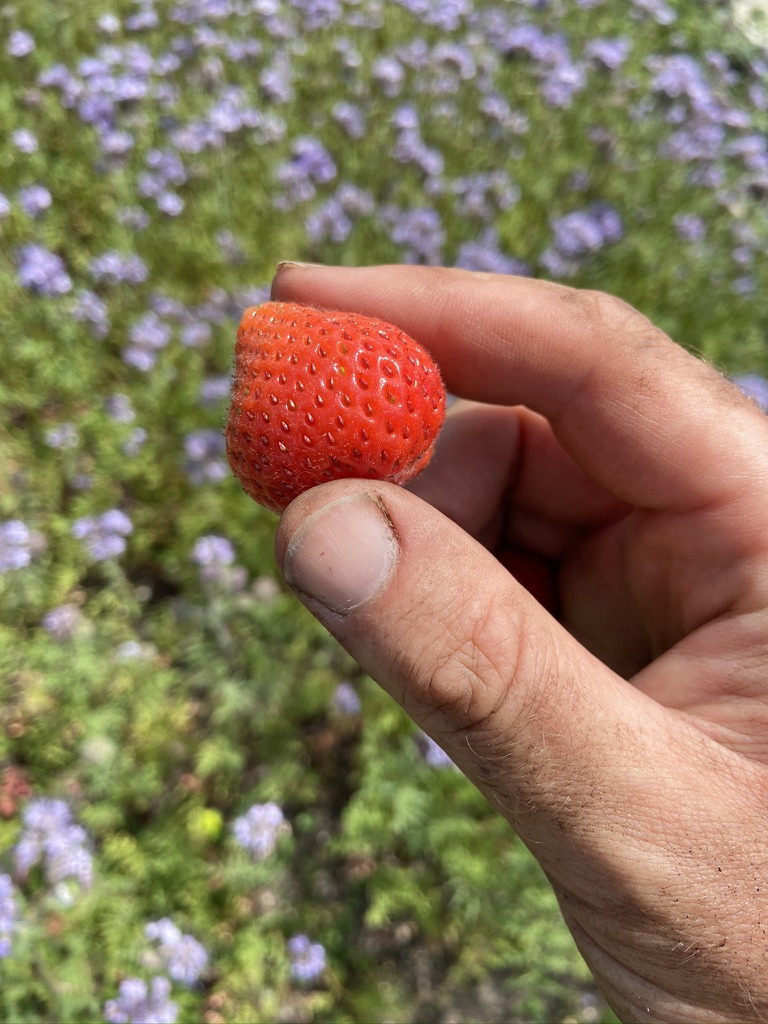
Don’t shout at me but I could never be bothered to grow strawberries on my allotment and I’m not totally sure why. I grew them as a child, as an adult I guess I’m not that fussed about them. Until now! The first ripe strawberry from my allotment was the best strawberry I’ve ever eaten, warm from the sunshine. I was given the plants by my neighbouring plot holder as a gift and I am very grateful for them, not just for the plants, but for making me see the light!
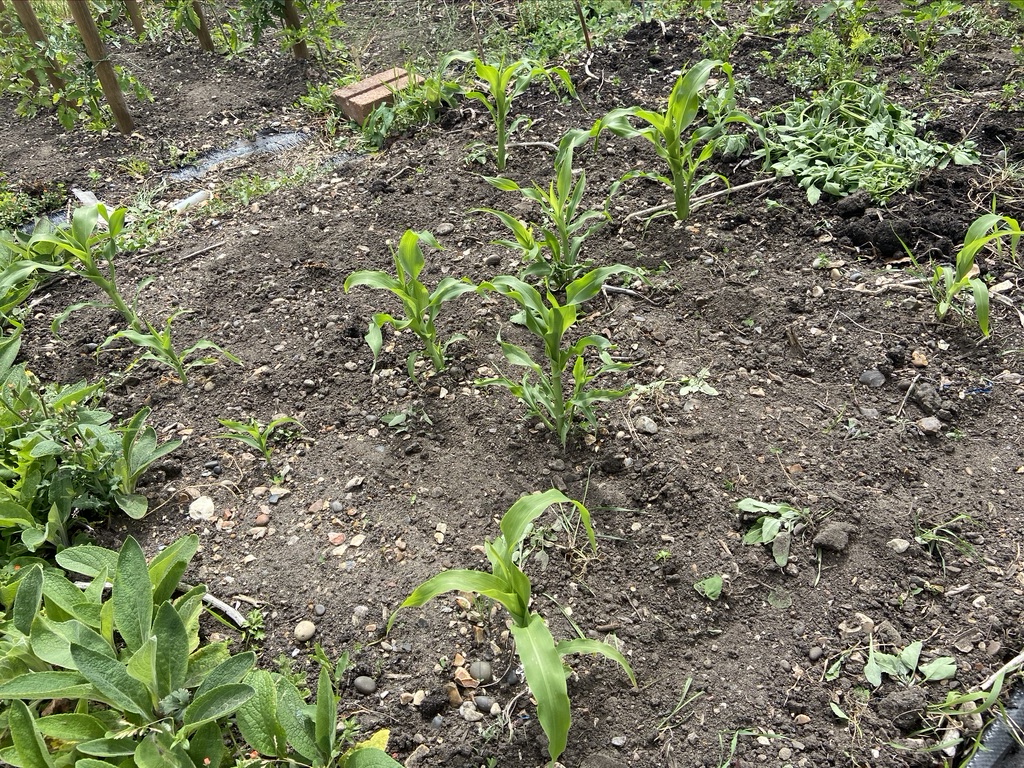
I never have a great deal of luck with sweetcorn. A combination of my neglect to pamper them and possibly the seed being eaten. My patches always look like this, less a ‘block’ as you’re supposed to have for better fertilisation (sweetcorn being wind pollinated) and more a patchwork. I don’t hold high hopes for many cobs…
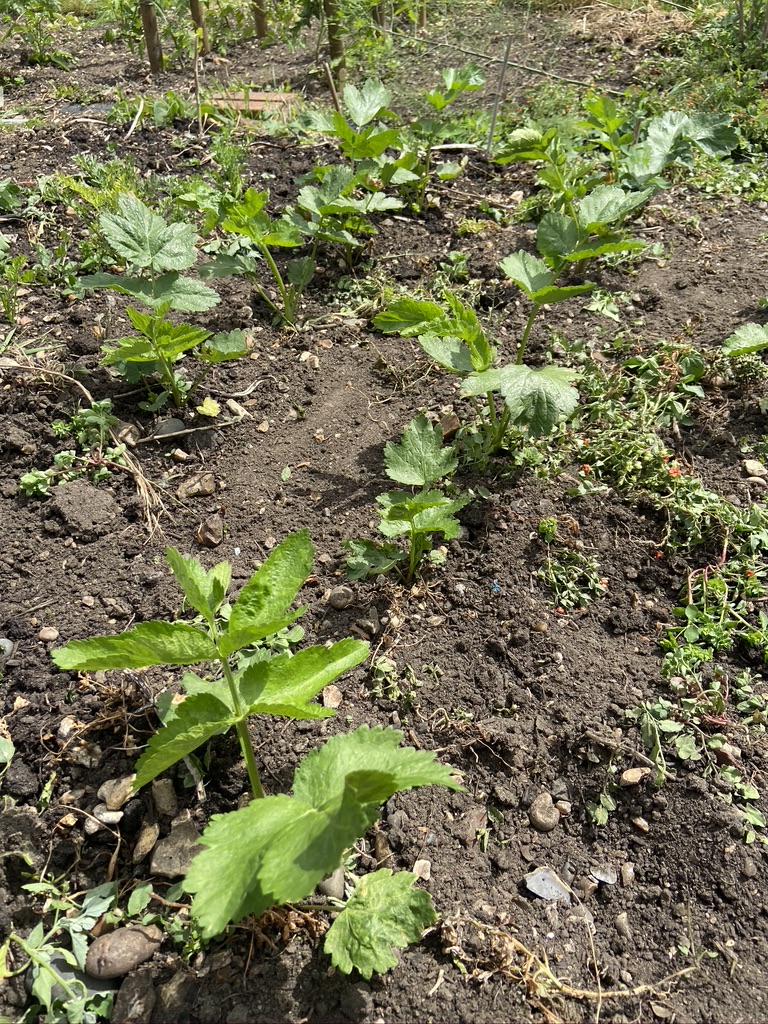
On the other hand, parsnips have always been one of my sure croppers. Our conditions must be ideal for them because I always find they germinate really well on my allotment, while others report of poorer results. Now the plants are large enough I won’t have to water or do anything to them until the day I dig them and eat them in winter.
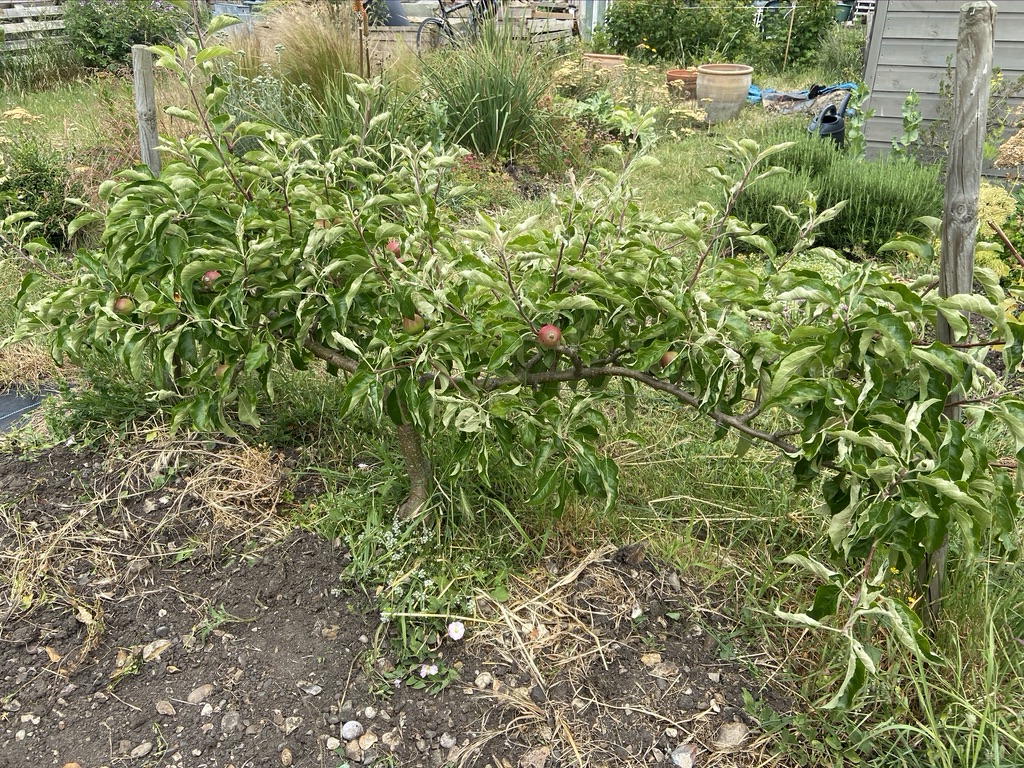
My stepover apple trees are doing as well as usual, although their leaves are curling through water stress due to the dry spring. A late frost zapped many of the blossoms so the crop is smaller than normal. Despite this, I still thinned some of denser bundles of apples to roughly one apple every 10cm. This helps development of the fruit and protects branches from becoming too heavy and snapping.
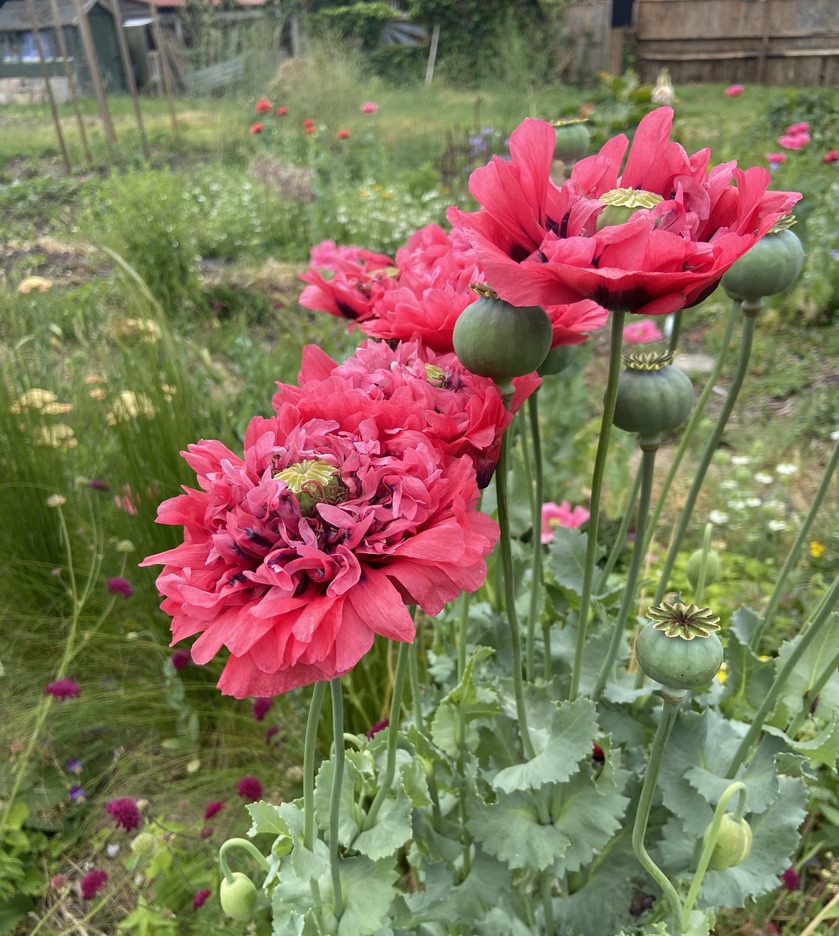
It’s become a running joke that no matter what colour poppies I sow on my allotment they always come up the standard red. Well, guess who is having the last laugh. Last year a random pink poppy appeared. I ripped out all of the red ones (for the fourth year running!) and left only the pink one. Thankfully, most coming up this year are also pink, hooray! Not the black poppy I wanted but this will do. Poppies will self sow gently around the plant in bare soil, their seedlings are easily identified and even easier to pull out. So leave seed heads on and thin between autumn and spring as they start appearing.
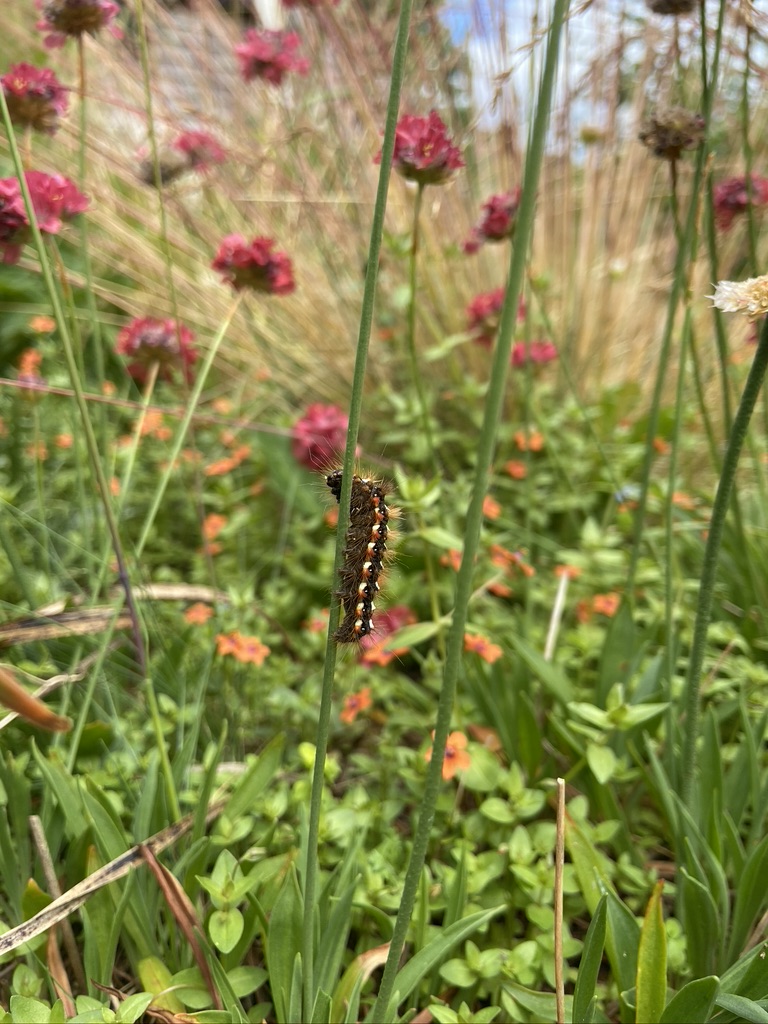
Wildlife on the plot is better than any other year this year, I think because of the good weather and the increased number of insect friendly flowers I’ve grown.
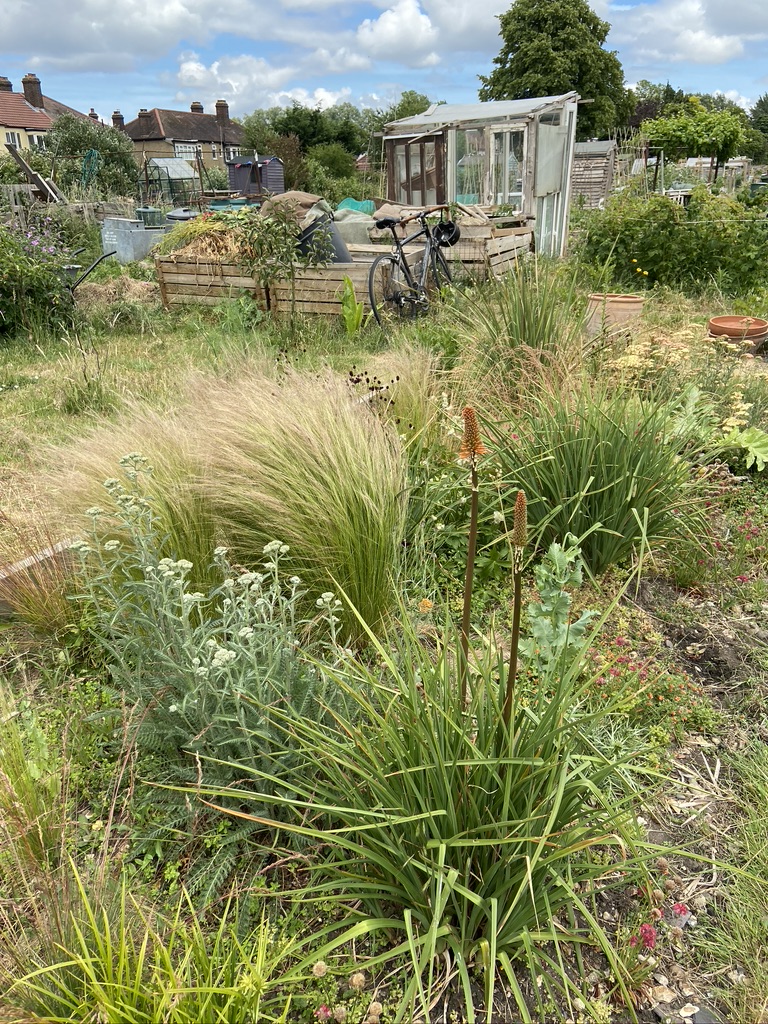
It’s been a very dry spring and my mini prairie has suffered as a result, flowers going over faster and leaves looking brown and parched. Despite this, it is still growing and the main summer display is now just around the corner.
In gardening, things will never go as planned and your plot will rarely grow in the same way as anyone else’s. The important thing is not to worry, keep sowing and growing. After all, if you keep throwing mud at the problem, eventually some will stick!

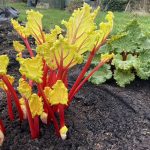
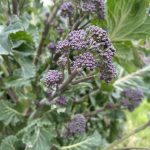

My parsnip is similar, though even more sparse with plant loss leading to about a 1.5m spacing. I’m hoping the giant triffid style sweetcorn the lady at the plot one over will produce enough pollen to blow over towards mine.
Annoyingly I think most of it died when the cover I’d put on to stop wood pigeons blew down and broke them.